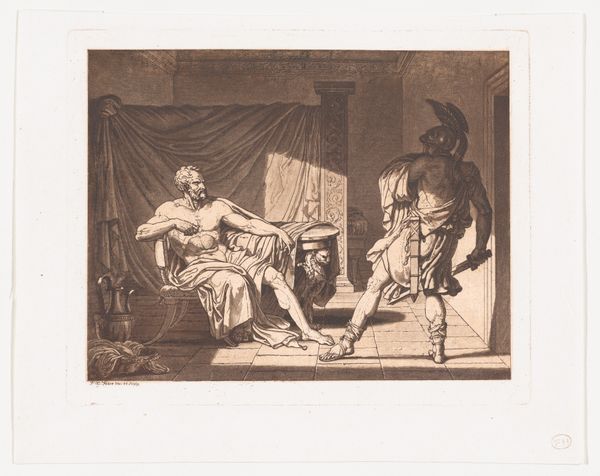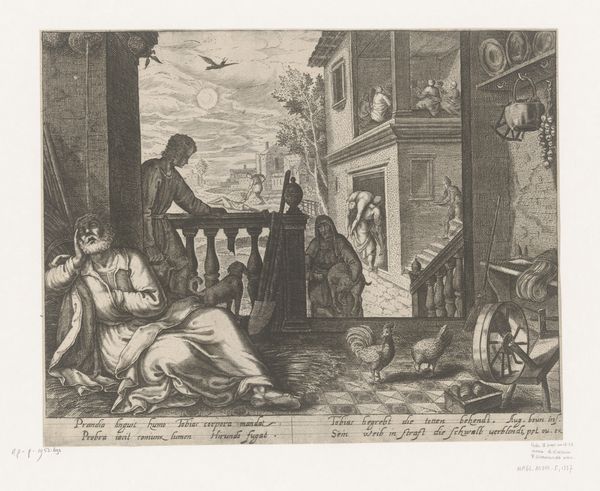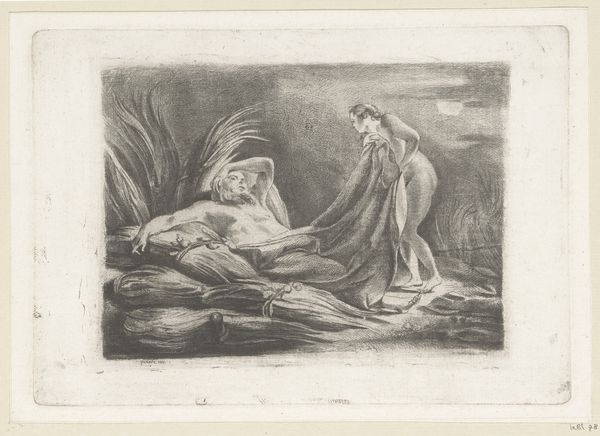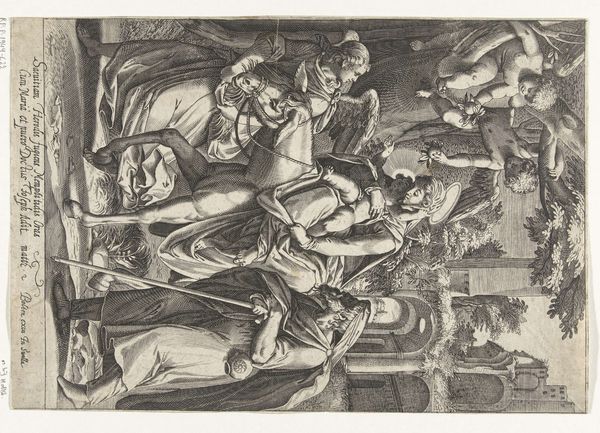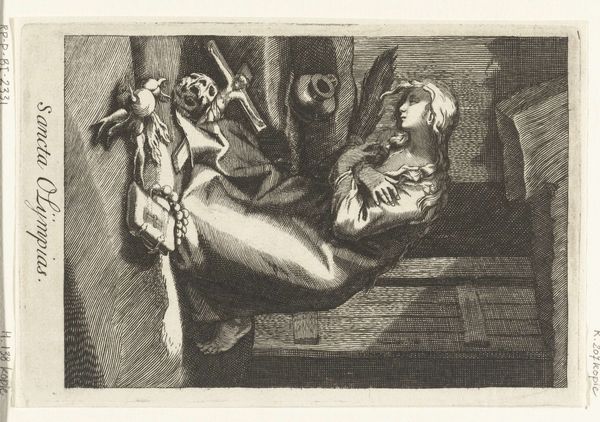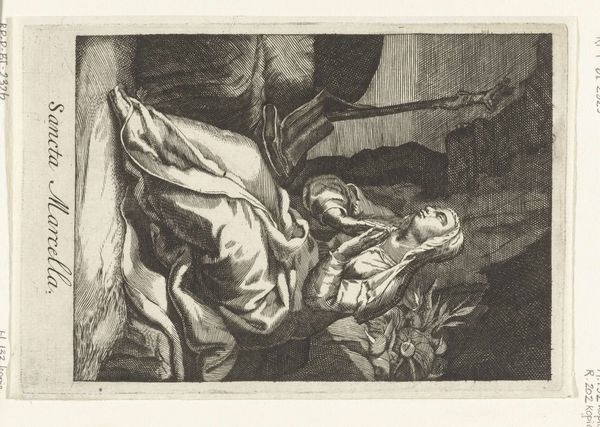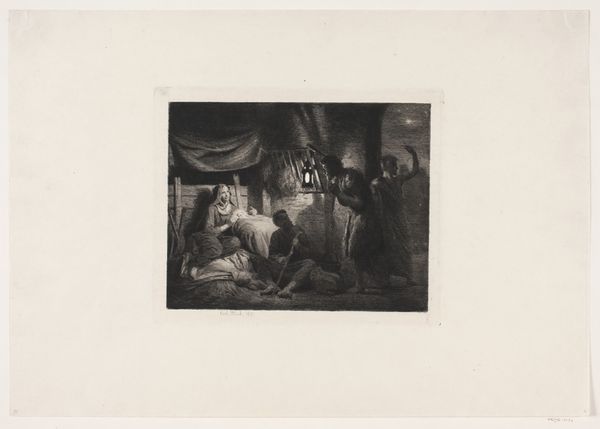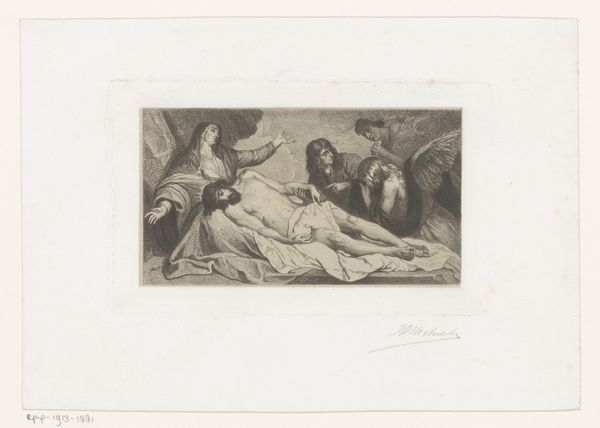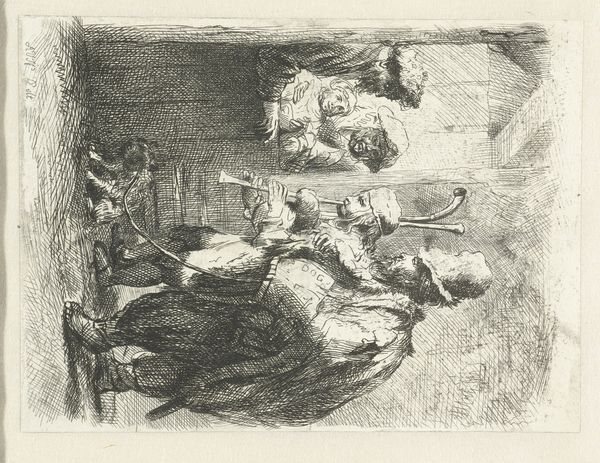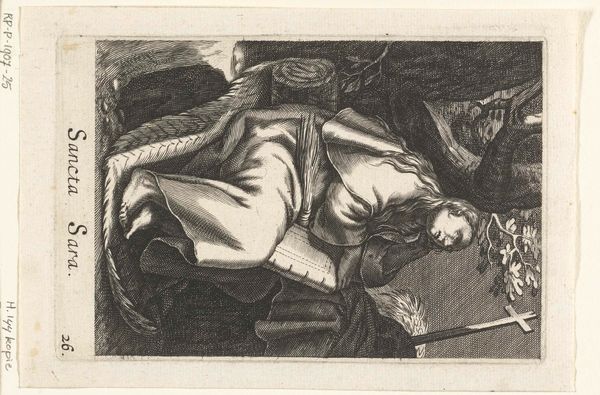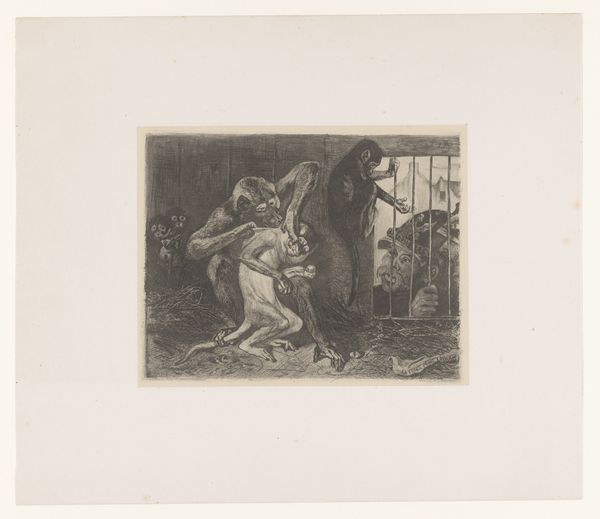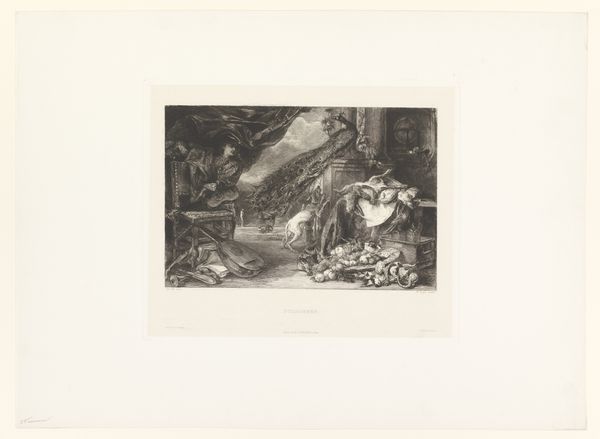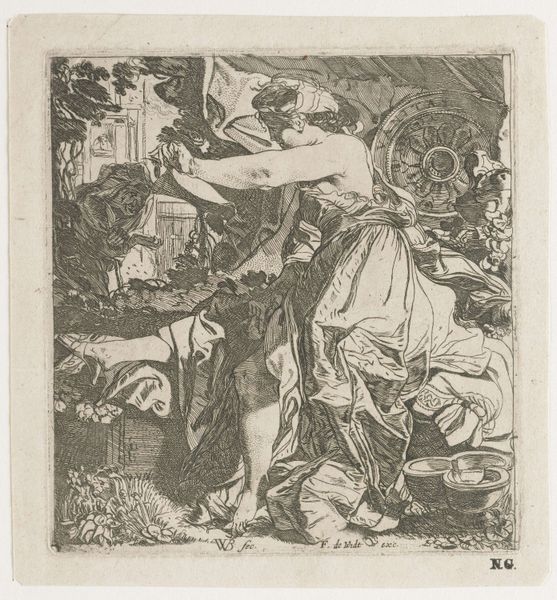
Dimensions: height 175 mm, width 229 mm
Copyright: Rijks Museum: Open Domain
Editor: Here we have Willem Steelink's "Huön en Almansaris," an etching from 1888. The scene is intimate, but there's a sense of distance. The detail in the foreground figures contrasts with the haziness of the overall composition. How do you interpret this work, and especially that sense of disconnect between foreground and background? Curator: It's crucial to view this work through the lens of Orientalism, a 19th-century Western fascination with the "exotic" East. Steelink, while seemingly depicting an intimate scene, participates in a larger power dynamic. Consider the passive female nude contrasted with the active, observing male figure. Whose gaze does this serve? Who benefits from this imagined encounter? Editor: So, you're saying the "exotic" setting and the visual contrast between the figures reinforce a colonialist perspective? Curator: Exactly. The “intimacy” you noticed becomes suspect. Is it truly intimate, or is it an exercise in possessing an idealized, submissive, and ultimately fictionalized "other?" Even the hazy composition, the ‘distance’ you mentioned, performs this act of romanticizing distance and imagined foreignness. And we must acknowledge how the depiction of nudity often reinforces patriarchal structures. What’s represented, and just as importantly, who is doing the representing? Editor: That reframes my initial impression quite a bit. I was focused on the artistic technique, but understanding the historical context opens up a completely different set of questions about power and representation. Curator: Precisely! Art is rarely neutral. Examining the historical, social, and political context allows us to unpack the layered meanings embedded within the work, to interrogate whose stories are being told, and whose are being silenced or distorted. Editor: I'll definitely look at these kinds of images differently going forward. Thanks for offering a new lens for interpretation. Curator: And thank you for your thoughtful engagement! These dialogues are essential for understanding our present and challenging future perspectives.
Comments
No comments
Be the first to comment and join the conversation on the ultimate creative platform.
